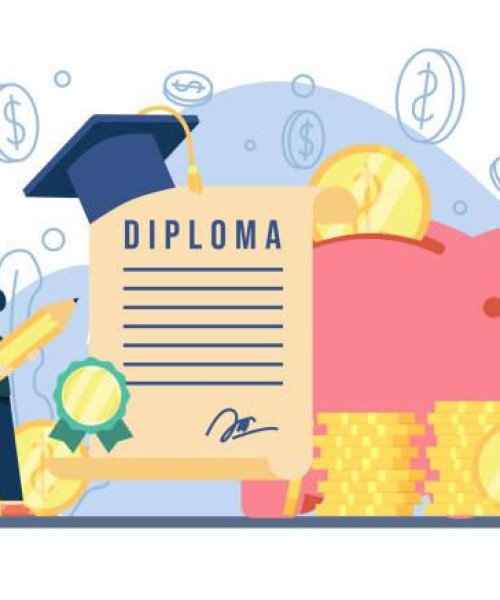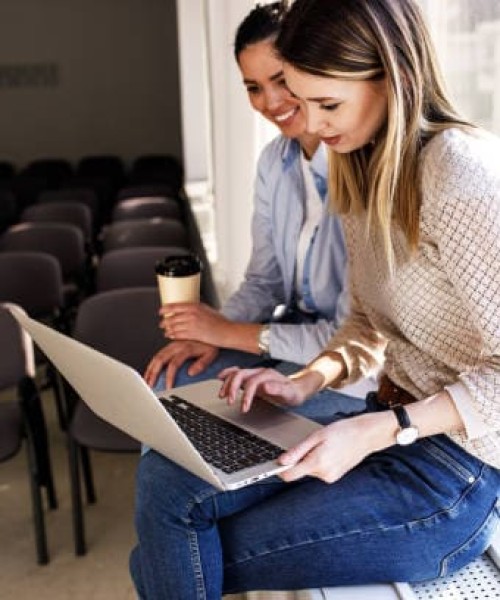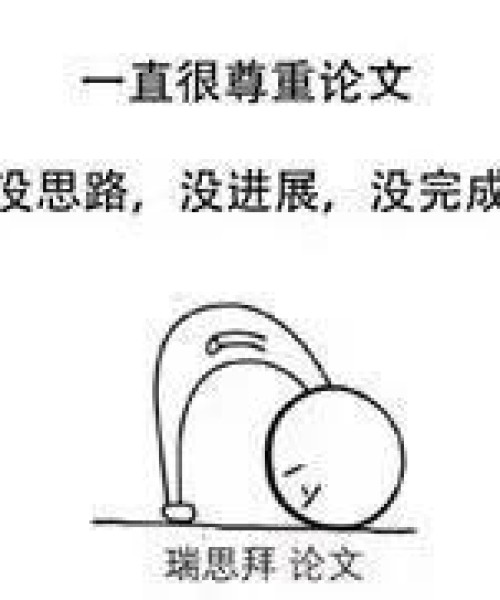E Learning And The Performance Of Students Education Essay
Published:
Learning could simply mean acquiring new knowledge or modifying behaviour. It takes time to learn and students need to go through a learning curve before achieving mastery. Education provides a structure for sharing knowledge through its formal institutions: schools. Learning can be viewed and analysed based on several theories which shall be detailed in following sections.
Senge (1990) said, as reported by Mitchell and Honore (2007) that learning cannot be simply limited to the classroom. Learning is more global and universal than what happens within the four walls of a classroom.
Brown (2004) reports that learning comes through experience and practice. This perception is mainly based on the concept of behaviourism which is on what the general current teaching practice is based. Brown (2004) also explains that learning has occurred when the learner sees thing that could not be seen before. Everything changes.
How Learning Happens
Brown (2004) describes how students learn according to the different learning theories established over time.
Theories/Perspectives
Key Concepts
Behaviourism
Building connections between stimuli and responses, task analysis and reinforcement. Relevant to course design, instruction and assessment.
Objectives, outcomes and taxonomies
The framework for course design and estimating levels of teaching and achievement. Strong links with behaviourism.
Gestalt psychology
Perception in learning, insight in problem-solving, importance of context, holistic learning. Relevant to organisation of learning materials, teaching understanding and problem-solving.
Experimental cognitive psychology
Learning is information-processing. The uses of memory: encoding, storage and retrieval. Relevant to teaching and all forms of learning.
Learning skills
Procedural memory, rules of procedure, goal-staking, limits of transferability. Relevant to teaching and learning practical, cognitive and social skills, course design and assessment.
Studies of student learning
Approaches to learning: reproductive learning, searching for understanding and 'strategies', effects of perceived contexts. Relevant to learning, teaching, assessment and course design.
Active learning
Active learning leads to improved recall and understanding. Implications for interaction in lectures, the use of learning tasks in seminars and the use of problem-based learning and projects.
Constructivism
Learners build schemata that enable them to construct meaning and understanding. Implications for teaching are to help the students to develop more sophisticated concepts through the use of discussion and study tasks.
Reflection and experiential learning
Types of reflection, styles of learning and reflection on experience. Relevant to portfolios, personal development plans, self-assessment and related forms of learning.
Humanistic perspectives
Freedom to learn, autonomy, trust, consultation, negotiation, responsibility, ownership and reflection. Relevant to teaching, course design, learning and assessment.
Growth theorists
Learner as a person, personal growth, learning as achieving potential, changing perceptions. Relevant to the relationships between teachers and students and the learning environment.
Andragogy
Active, relevant, problem-based, learning contracts, reflection. Relevant to all forms of learning and student-centred teaching.
Self-directed learning
Managing one's own learning, autonomy, independent learning. Relevant to projects, portfolios, computer-based learning, problem-based learning, independent study, assessment and course design.
Student-centred learning
Stresses freedom and responsibility. Close relation to self-directed learning. Implications for teaching, use of enquiry-based approaches and assessment involving self, peer and collaborative methods.
Critical humanist perspectives
Enablement, empowerment, critical reflection, transformative learning, changing perceptions and changing environments. Relevant to course design, methods of teaching and learning and assessment.
Table 1 - Key Learning Theories (Brown (2004))
e-learning: Getting a Clear Idea
e-learning can be viewed as computer assisted learning, implying that learning materials are being provided in an electronic format. (Zhang et al., 2004; Jethro, Grace and Thomas, 2012) During the early stages of e-learning development, the focus was mainly on computer assisted leaning where content was being digitally provided. There is now a pedagogical dimension added and, consequently, e-learning is now seen as a means to electronically support teaching and learning.
e-learning can happen in two modes: synchronous (online) and asynchronous (offline) (Samuel and Subhashini, 2011; Koutsabasis, Stavrakis, Spyrou and Darzentas, 2011; Jethro et al., 2011). Synchronous delivery is usually instructor led and asynchronous implies that transmission and receipt of information does occur simultaneously. Two common ways e-learning content may be delivered are either distance learning or computer assisted instruction (Jethro et al., 2011). Koutsabasis et al. (2011) list the different forms that e-learning takes:
computer based learning software found on multimedia CD-ROMs
web-based e-learning platforms (such as Claroline and Moodle) which allow for synchronous access to many types of learning content: real-time conferencing and online student assessment.
Quality of e-learning contents tends to very inconsistent. Norms are not clearly set and designers overlook a number of key issues such as bandwidth availability (Samuel and Subhashini, 2011). Jethro et al. (2011) agree and suggest that standards are needed when creating new e-learning material; standards would also ensure cross-systems compatibility which would enhance the widespread use of e-learning materials. The quality of e-learning material can be improved by ensuring that the technology and the learning design are of the highest quality. The administrative staff at the school, the teachers and learners themselves need to be trained and encouraged to use the new learning methods being made available (Mitchell and Honore ,2007). Wu and Hwang (2010) explain how the effectiveness of e-learning could be measured: a three-level framework which assesses e-learning effectiveness. Students should have required computer skills, be able to easily navigate through the e-learning content and multimedia elements should be used effectively.
Figure 1 - The three-level framework of students' e-learning effectiveness
Usability helps to appreciate how the users' attitudes, satisfaction and how efficient the e-learning system is. Use is a variable which indicated how effective is the introduction of new technologies and systems. In simple terms, e-learning will be effectively implemented and used once the adequate mode of operation has been identified and users positive to the new learning method. (Wu and Hwang, 2010)
E-learning content needs to be developed using instructional design techniques. These are similar to lesson planning but here translate general learning principles and objectives into instructional materials (Jethro et al., 2011, Wertheim and Leyser, 2002). Pure text form should be avoided for e-learning content since that would make learning monotonous. There are several components of e-learning which are organised in modules. An instructional unit is self-contained and focus about specific learning objectives which are then used to make up for larger educational materials - e.g. lessons. Learning objects could be tutorials, case-based learning or based on simple educational games. (Jethro et al., 2011)
Combining e-learning practices and traditional learning produces blended learning (Markus, 2011).
Ehlers (2009) provides a comparison between different generations of e-learning. During the early stages of e-learning quality was assessed by experts and the learning platform set up was very content intensive. It followed closely pre-determined curriculums and was modelled on the structure of traditional classes. Multimedia was being used, mostly to provide for interaction. Then came about the second generation: e-learning 2.0. The content quality was now being assessed by learners and peers and this allow for a personal learning environment. Users can post and share their own developed content. Communication is also easier with diverse means such as blogs, video conferencing, etc. Blogs particularly allow for creating new pages easily but having learners to start blogging is not the required objective (Nedeva and Nedev, 2010). E-learning 2.0 also encourages enhanced user participation through comments
E-learning 1.0
E-learning 2.0
Quality is assessed by experts
Learning platform
Content
Curriculum
Structure of classes
Availability of tutors
Multimedia (interactive)
Appropriation processes
Quality is assessed by learners and peers
Personal learning environment
User-created content
Learning diaries/e-portfolios
Communication
Interaction
Social networks and communities of practice
Participation processes
Table 2 - Comparing E-learning 1.0 and 2.0 (Ehlers, 2009)
Evaluating e-learning as a Learning Support
Jethro et al., 2011 suggest that e-learning is seemingly better than traditional instructor-led methods and e-learners proved to be learning more efficiently and showed better retention. Zhang et al., 2004 provided a more detailed comparison of traditional classroom learning and e-learning.
Traditional Classroom
Learning
E-Learning
Advantages
Immediate feedback
Being familiar co both
instructors and students
Motivating students
Cultivation of a social community
Learner-centered and self-paced
Time and location flexibility
Cost-effective for learners
Potentially available to global audience
Unlimited access to knowledge
Archival capability for knowledge
reuse and sharing
Disadvantages
Instructor-centered
Time and location constraints
More expensive to deliver
Lack of immediate feedback in asynchronous e-learning
Increased preparation time for the instructor
Not comfortable to some people
Potentially more frustration
anxiety, and confusion
Table 2 - Comparing traditional classroom learning and e-learning (Zhang et al., 2004)
Kolb, as reported by Brown (2004), suggests "learning is the process of transforming experience into knowledge" and therefore any learned concept should be based on the student's own experience. He suggested that learners can develop a theoretical understanding only when they reflect on it and may then apply this new understanding to new contexts and situations.
Figure 2 - Kolb's Experiential Learning Cycle
E-learning requires an adequate environment and framework for effective implementation and ensure the popularity of the learning method. Hardware - in the form of computers, should be made available. Faster Internet connectivity through an increased bandwidth will allow the learners to have access to video streaming facilities and other media-rich content. The language barrier should be minimised, if not eliminated, to allow the learner to make optimise use of exposure time to the online material. Educators should strive to increase awareness about the importance and opportunity of e-learning and the school's administration should ensure that teachers are trained to use and develop e-learning content since it is clearly more complex and demanding to create. (Jethro et al., 2011; Zhang et al., 2004) Removing students from traditional classes could lead to social isolation resulting of a lack of social and cultural interaction. Quality standards and copyright issues need to be strongly adhered to during the process of developing and selecting e-learning content. (Samuel and Subhashini, 2011)
[4,5] as reported by Zhang et al., 2004), believe that e-learning is not adequate to all students even if it at least as effective as conventional classroom learning. E-learning may not fit the learning style of every student. Students may feel "bored or intimidated before a computer". Students claimed that they prefer a real life learning environment to the e-learning one. E-learning however, as reported by Jethro et al. (2011) and Gorgon, Booth and Bywater (2010), improves the learning experience and extends learning beyond class hours and can help eliminate barriers to achievement by enabling and inspiring the learners. Jethro et al. (2011) suggest that e-learning would support differentiated learning by providing an individualised learning experience for all learners - this is addressed further down.
E-learning in the education sector is still at its introductory stages. There are gradually more and more content being posted online. Content Management System such as Moodle are providing the platform for several secondary colleges for providing e-learning material to the students. However, over time, most of these schools are either not keeping the content updated, confining it to the Computer Studies department or have closed down. Zhang et al. (2004) have designed a model of an e-learning platform which could well be adapted to the Mauritian context: Virtual Mentor. This would be an e-learning environment with multimedia content and instructions. There would be much interaction between learners and the Virtual Mentors. The learner is put consistently at the centre of the learning process: learning is self-directed. The Virtual monitor regularly monitors the individual's learning progress and then ensures personalised tutoring.
Active Learning
consider docs m172 to m176
Brown (2004) states that student-centred learning is closely related to self-directed (active) learning. The students should be allowed freedom of choice and be "responsible for their own learning". The students should be placed in a encouraging and helpful environment where students can develop their skills and attributes which would prepare them for lifelong learning. The following table shows a comparison between student-centred learning and didactic teaching.
Student-centred
Teacher-centred
Focuses on what the student does to learn
Focuses on what the teacher does to teach and what the student should do
Students' experience as well as their knowledge is considered
Focuses primarily on increasing students' knowledge
Students take key decisions on what to study and how
Teacher takes key decisions on what to study and how
Students take key decisions on choice of assessment task and criteria
Teacher takes key decisions on assessment task and criteria
Feedback is primarily concerned with helping students to improve
Feedback is primarily concerned with telling students whether they have fulfilled the assessment criteria
Assessment and feedback include self-, peer and collaborative assessment
Assessment and feedback do not include these approaches
Active learning
Passive learning
Deep learning
Surface learning
Problem-based
Discipline-based
Emphasises development of understanding and constructions of meaning
Emphasises transmission of knowledge
Concerned with meta-cognition - with learning how to learn
Not concerned with meta-cognition
Uses enquiry-based methods such as projects, dissertations and portfolios
Does not use enquiry-based methods
Emphasises reflective learning
Emphasises reproductive learning
Develops autonomy
Develops conformity
Differentiated Learning
Differentiated learning is not a new revolutionary term or concept. It relies on the belief that all learners do not learn uniformly and in a strictly pre-determined way. There are differences that make the learning experience of each learner unique even if the learning content and other educational settings are identical. Differentiated learning can help overcome the different educational needs and requirements of a diverse population. Differentiated learning can thus be suitably implemented in a mixed-ability classroom (Fahey, 2000; Tomlinson, 2000; Anderson, 2007; m100). Differentiated instruction relies on the constructivist learning theory, different learning styles and the learner's brain development stage (Tomlinson & Allan, 2000 as reported by Anderson, 2007). The students in a classroom come from largely varying backgrounds and possess a wide range of abilities. Furthermore, students do not learn at the same rate and their learning styles differ much from one child to another (Cox, 2008). Teachers decide on the learning goals for each group of learners. Grouping the students would require that teachers understand their student's individuality, readiness, interest and general profile. The classroom is also more flexible and the structure and procedures can be adapted for enhanced effectiveness (Tomlinson, 2000).
Cox (2008) suggests that small groups, in contrast with large groups, are better for individual learning. Small groups enhances learning by helping to bridge the gap between understanding and skill. One group-making strategy would be based on the students' fields of interest. The difficulty level should be very precisely determined since a too difficult or too easy work/task would result in a loss of the learners interest. Learners are motivated and learn better when the level of difficulty if a little above their current level. There should also be an adequate system in place to help the learners progress (Cox, 2008) and the educators should be able to modify and adapt instruction to include the learning needs of the more gifted learners (Manning, Stanford and Reeves, 2010). Alternatively, students could be allowed to personalise their learning environment and experiences and a technology-driven individualised learning will allow for differentiated learning (Demski, 2012). Anderson (2007) recommends that teachers should be treating each child differently and in a unique way altogether. Teachers should also be vying to provide an inclusive learning environment whereby no child is left behind.
Fahey (2000) reports a case study where differentiated instruction was implemented. It concerned a small school which has limited funding and a reduced staff. There was a pressing need to improve the academic performance. The school provided three tracked levels of curriculum through streaming. There were consequent disciplinary problems and students were not very motivated as result of an absence of positive role models. Parents were kept constantly involved through an advisory committee. There was a marked improvement in the school's climate following the implementation of differentiated instruction. The set target was that all students reach minimum standards at the same time encouraging, exciting and challenging the higher-ability students to go beyond their ability to realise their potential. There were increased possibilities for the children to develop themselves - some of the means used were posters, plays, drawings, oral presentations and so on. Students went beyond the usual classroom work to explore their own areas of interest. Parents however represent a stumbling block in the successful implementation of this project. The parents were left under the impression that their children workload was being increased and they did not want their children to be teaching others.
Technology and Education
Technology and education are bound to be more and more associated and combined. Educators are finding it hard to keep pace with the upcoming technologies and integrating them into classroom instruction is not very obvious. Integrating technology into classrooms does not simply mean to use projector and animated slides. Students should be using technology to enhance their thinking, critical and problem-solving skills (Pilgrim, Bledsoe and Reily, 2012). Blogs are one of the different technological tools that can be used within the classroom context to enhance teaching and learning. Blogs could be used to extend class hours. Students who have no Internet access at home could simply download the required blog documents (audio and video files). Blogs would allow teachers to introduce new topics, review key concepts. Blogs could be made to work alongside textbooks. Podcasts could be created in the same way that lessons would be done in class. Blogs are easy to create and set up but maintaining requires much time and effort. Teachers need to redesign their teaching content and models. Effective integration of technology into the classroom would require the teacher to adapt the learning content to the online format. Close collaboration between teachers of the same content area would greatly help the teachers to evaluate the effectiveness of the newly developed content (Colombo and Colombo, 2007).
Blended Learning
Blended learning an alternative mode of delivering classroom instructions. Online content is combined with typical face-to-face components (O'Connor, Mortimer and Bond, 2011; Wu and Hwang, 2010). The classes are no longer limited by four walls since educational technological content allows the teachers to continue instructing beyond the traditional classroom walls (Harrington, 2010). Wu and Hwang (2010) argue that blended learning is not limited to geographical barriers and allows the learner access to self-directed learning. Moreover, the learning resources can be used more than once and updating the learning materials is a very straightforward procedure. Blended learning ensures standardised content, personalised instruction, facilities to update and distribute content and accountability (Jethro et al., 2011). "Learners have control over the content, learning sequence, pace of learning, time, and, often, media, which allows them to tailor their experience to meet personal learning objectives. (Jethro et al., 2011)". Blended learning requires imperatively that students have access to technology, are computer literate, have good reading skills and are academically able. The students require these skills - specially computer skills - to overcome the digital divide (Harrington, 2010). Consequent financial resources have to be invested into the development of quality e-learning content and the proper modality has to be identified in order to reach the set educational objectives (O'Connor et al., 2011). Students are increasingly getting used to technology and will, as generations go by, require more responsive learning tools and may even be developing their own educational content and communities. However, institutions will maintain the upper hand for certification and standard setting (Craig, 2007).
The Sankoré Project
Introduction
Following the Franco-British Summit held in March 2008, the French government established the Diena(Délégation Interministérielle à l'Education Numérique en Afrique). It aims at helping Africa to achieve the Education for All (EFA) goals through digital empowerment. In this respect the Sankore Project is being implemented in several African countries including Mauritius. It targets at a qualitative change in the classroom. Since we are living in the "Digital age", this digital revolution in the educational sector will bring various opportunities for learners with different learning styles. The Sankoré project will thus help to bring fundamental change to the current teaching and learning process. The project is presently being implemented in Std IV classrooms.
The Sankore Program involves:
Equipping schools with digital classroom
The starting point of this revolution is the Interactive Whiteboard (IWB) used by the teacher. Through a projector connected to the teacher's laptop, the whiteboard or a simple white wall becomes an interactive interface that can be used by teacher and students. Using a stylus (electronic pen) they can write, erase and create texts, illustrations or multimedia resources (videos) or access to animations and interactive exercises.
Development of digital educational resources
The Sankore Panel at the MIE, also known as the Learning Factory is in charge of producing e-learning materials. In compliance with the digitization of the STD IV curriculum, many interactive educational resources in the form of lessons, games and activities are being developed and produced and all these will be fed in schools in the short and medium term.
Providing empowerment and support to teachers The Sankoré team is assisting to the professional development of various stakeholders who are involved in the project. After the Headmasters, Inspectors and ICT teachers, it is now the turn of the Std IV educators to be trained at various training centres in their respective zones
Official website: http://sankore.mie.mu/?page_id=2
Chapter 3- Proposed Methodology
This study will focus very specifically on the Modern College and how it deals with mixed ability students in a single classroom. Classes of different levels will be considered and the different approaches to differentiated learning will be considered. Educational technologies and differentiated teaching-learning practices will be introduced in these classes and the degree of success of these new methods will be evaluated. This will be done via observing the student at work and setting questionnaires requiring teachers, parents, students and the administrative staff to evaluate the impact of the new teaching philosophy. Interviews of some of the teachers involved will also be carried out.
Convenience sampling will be used and the collected data will be analysed using SPSS.
3.1 - Timeline
Stage
Expected Completion Date
Introduction
March 2012
Literature Review
May 2012
Methodology
June 2012
Data collection
August 2012
Data Analysis
September 2012
Discussion
October 2012
Conclusions and Recommendations
October 2012
Formatting and completing preliminaries
November 2012
Handing in final version
November 2012
Chapter XXX - Reference Section
m143 - Anthony Mitchell, Sue Honore, (2007),"Criteria for successful blended learning", Industrial and Commercial Training, Vol. 39 Iss: 3 pp. 143 - 149
m92
m93
m98
m99
m100
m101 - Education Digest: Essential Readings Condensed for Quick Review, v73 n9 p52-54 May 2008
m103
m104
m107
m108
m109
m114
m117
m123
m136
m139
m141
m143
m144
m145
m147
m155
m159
m163 -
m165









